On the afternoon of Thursday April 3rd
1817, the overseer of the parish of Almondsbury, Gloucestershire brought a
young woman to Knole Park, the home of the local magistrate, Samuel Worall Esq.
She had wandered into one of the cottages in the village but no one could
understand a word she said. Worall had a Greek valet, who spoke several
languages, but he couldn’t understand her either. She was slim, not exactly
pretty but there was intelligence in her dark eyes, she stood about five feet
two inches tall, seemed about twenty-five years old, with black hair and neat,
well-cared--for hands that seemed unaccustomed to hard work. She was dressed
poorly but quaintly, in a black muslin dress, shawl and a sort of turban, she
had a few coins in a pocket, a small piece of soap wrapped in linen and wore
worsted stockings and black leather shoes.
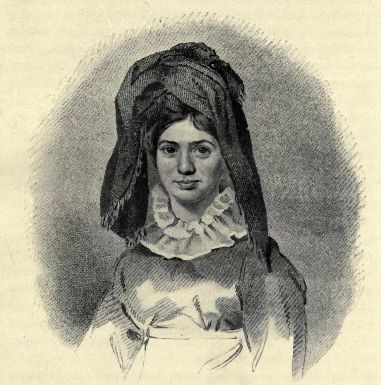 |
| Princess Caraboo |
Mrs Worall arranged for her maid and
a footman to take the stranger to the village inn, where she was to be given
food and a clean bed, but when she was taken into the room she made to lie down
on the mat to sleep and had to be shown how to use the bed. Early on the next
morning, Mrs Worall went to the inn and found the girl staring dejectedly into
the fire but when she was shown some picture books, she became very excited in illustrations
on China and the Chinese. Through pointing and repetition, Mrs Worall was made
to understand that the girl’s name was Caraboo.
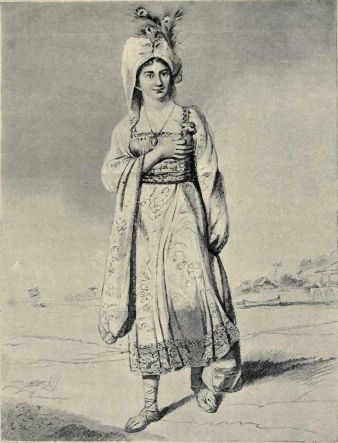 |
| Princess Caraboo |
She was taken back to Knole and
then to Bristol, where she was placed at St Peter’s Hospital but she refused
all food and would only drink water. Mrs Worall took her back to Knole and
eventually a gentleman who had travelled in the East managed to make some small
communication with Caraboo. She was the daughter of a high-ranking Chinese
father and a Malay mother, and had been kidnapped by a pirate called Chee-ming,
who had sold her to the captain of a brig called the Tappa-Boo, who took
her to Batavia where she was put on a ship to England, which was reached after
eleven weeks at sea.
She escaped from the abusive crew by jumping overboard and
swimming ashore, where she swapped her embroidered silk dress for the dark
clothes she was found wearing in a cottage with green painted doors, but she
didn’t know where this was. She had wandered in England for six weeks before
arriving at Almondsbury. Over the next ten weeks, more information was
revealed; she preferred to eat rice and vegetables and refused meat, other than
a bird which she killed and cooked herself, sprinkling its blood on the ground
and covering it with earth. She fasted on Tuesdays, when she would make her way
onto the roof and pray to the sun. She was never heard to utter a syllable that
even slightly resembled a European word.
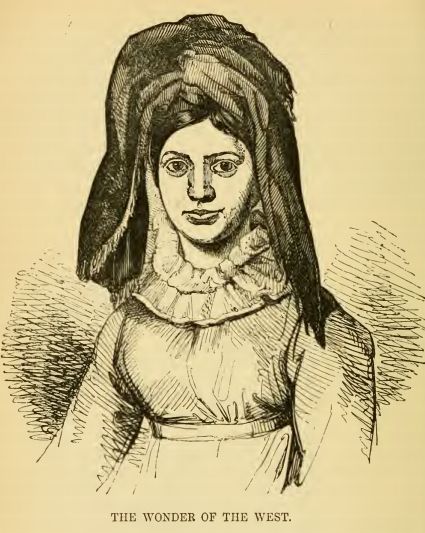 |
| The Wonder of the West - Caraboo |
And then, on June 6th, she
disappeared, taking nothing with her other than what she had been given. Mrs
Worall eventually received word that Caraboo was in Bath, so she went there
immediately and found her in the sitting room of a lady of high fashion,
attended by servants and dressed in silks and feathers. The Princess of Javasu,
as she was now called, returned again to Knole but the story of Caraboo had
spread throughout the West of England.
During the following week, a Mrs Neale
sent word to Knole, claiming that the Princess had lodged with her at Bristol,
and a wheel-wright’s son from Westbury arrived with the tale that he had seen
Caraboo sitting at the roadside to Almondsbury, when a gentleman had taken pity
on her and treated her to beefsteaks and rum and hot water in an inn. Mrs
Worall took Caraboo to Bristol, on the pretence that she would have a portrait
painted, but instead went to Mrs Neale and her daughter, who told her that they
knew the Princess very well. When faced with the evidence, Caraboo broke down
and the true story was revealed.
 |
| The Princess of Javasu |
Her name was Mary Baker, she had been born in
1791 at Witheridge, Dorsetshire, to poor parents, and she had spent her early
summers weeding the cornfields and her early winters spinning wool. At sixteen,
she went as a servant to a Mr Moon and stayed for two years, leaving when her
request that her wages should be raised from ten pence to one shilling a week
was refused. She ran away and made her way via Exeter, Bristol and Taunton to
London, where she begged from door to door. She fell ill and was sent to St
Giles Hospital, where a dissenting clergyman took pity on her and found her a
position with Mrs Matthews, a strict Calvinist lady, who taught Mary to read.
She stayed with Mrs Matthews for three years but following an argument about
her behaviour, Mary ran away again and resolved to return to Devon, and spent
years drifting with a variety of low-life characters. She married a sailor in
London, and went with him to Brighton and Dover until she became pregnant, when
he ran away and left her. The child was placed in the Foundlings’ Institution
and Mary took a servant’s job nearby, visiting it every week until it died,
whereupon she took up with a band of gypsies, telling fortunes, and eventually
making her way back to Witheridge.
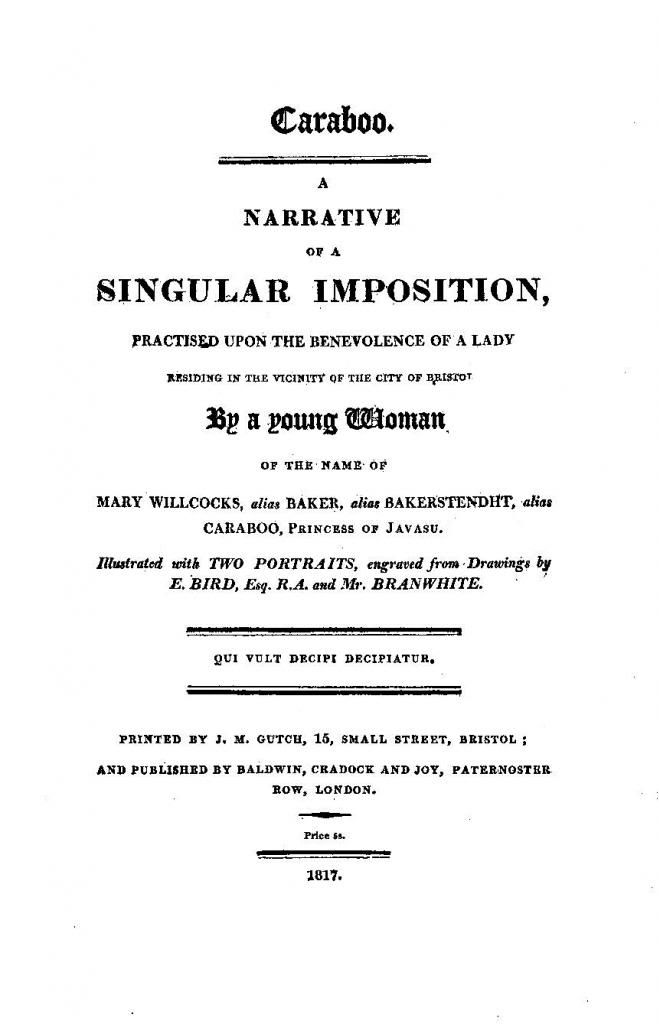 |
| Caraboo - A Narrative of a Singular Imposition - 1817 |
Mary Baker may have been an impostor but she
hadn’t really done anything wrong – she never asked for anything, she did not
steal anything, she didn’t take anything that wasn’t freely given. Her sole
motivation, it appeared, was simply to be Caraboo. Her fame spread – the
Earl of Cork and the Marquess of Salisbury had interviews with her, hearing her
story and getting her to speak her ‘lingo’ and, undoubtedly, pressing a coin or
two into her hand. A parody of the stanzas about Lochinvar (from Scott’s
Marmion) was circulated, the first verse reading,
“Oh ! young Caraboo is come out of theWest,In Frenchified tatters the damsel is drest;And, save one pair of worsted, she stockings had none,She tramped half unshod, and she walked all alone:But how to bamboozle the doxy well knew;You ne'er heard of gypsey like young Caraboo.”
Much sport was had in the popular press on the
gullibility of the rural middle classes. Eventually it was decided that she
would emigrate to America, and with Mrs Worall’s help she booked passage in the
name of Burgess, her mother’s maiden name, on the Robert and Anne out of
Bristol bound for Philadelphia. In 1824, Princess Caraboo was back in London
and if you paid a shilling, you could visit her on New Bond Street, although
the novelty had worn thin by then and there were few subscribers. She was later
said to have made a living selling medicinal leeches to the Bristol Infirmary,
to have remarried and borne a daughter, before she died in her seventies and
was buried in an unmarked grave.
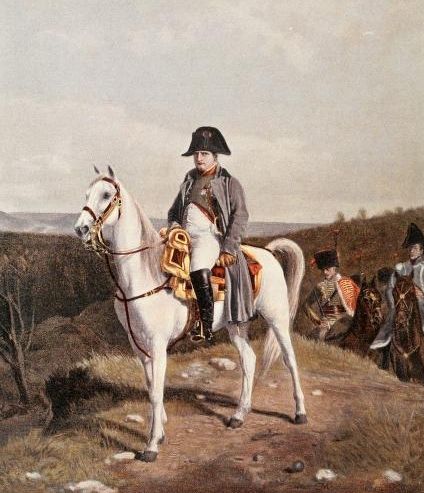 |
| Napoleon Bonaparte |
There is an unsubstantiated rumour that when
the Robert and Anne was sailing across the Atlantic Ocean, a storm
forced it off course and so far south that it was close to the island of St
Helena. Princess Caraboo took a boat and rowed herself ashore, where she met
Napoleon Bonaparte, who was imprisoned there by the British following his
defeat at the Battle of Waterloo. It is said that the exiled Emperor was so
taken by the Princess of Javasu that he offered to divorce Maria Louisa and
marry her instead.
No comments:
Post a Comment